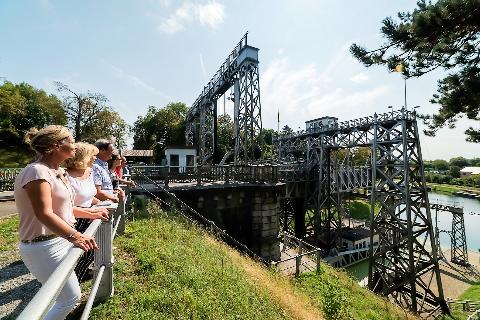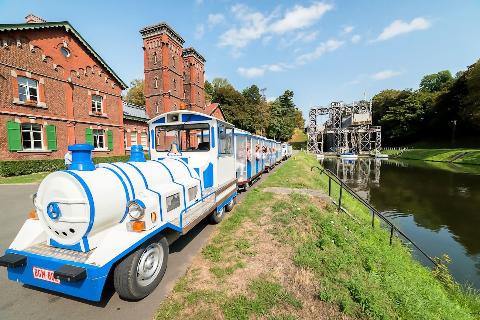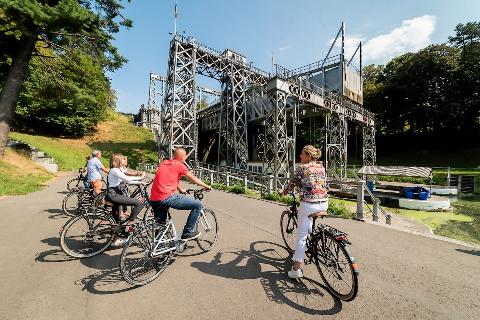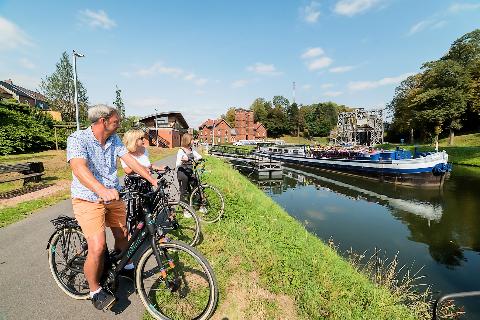Ascenseur hydraulique n°3 du Canal du Centre historique
B-7110 Strépy-Bracquegnies (La Louvière)
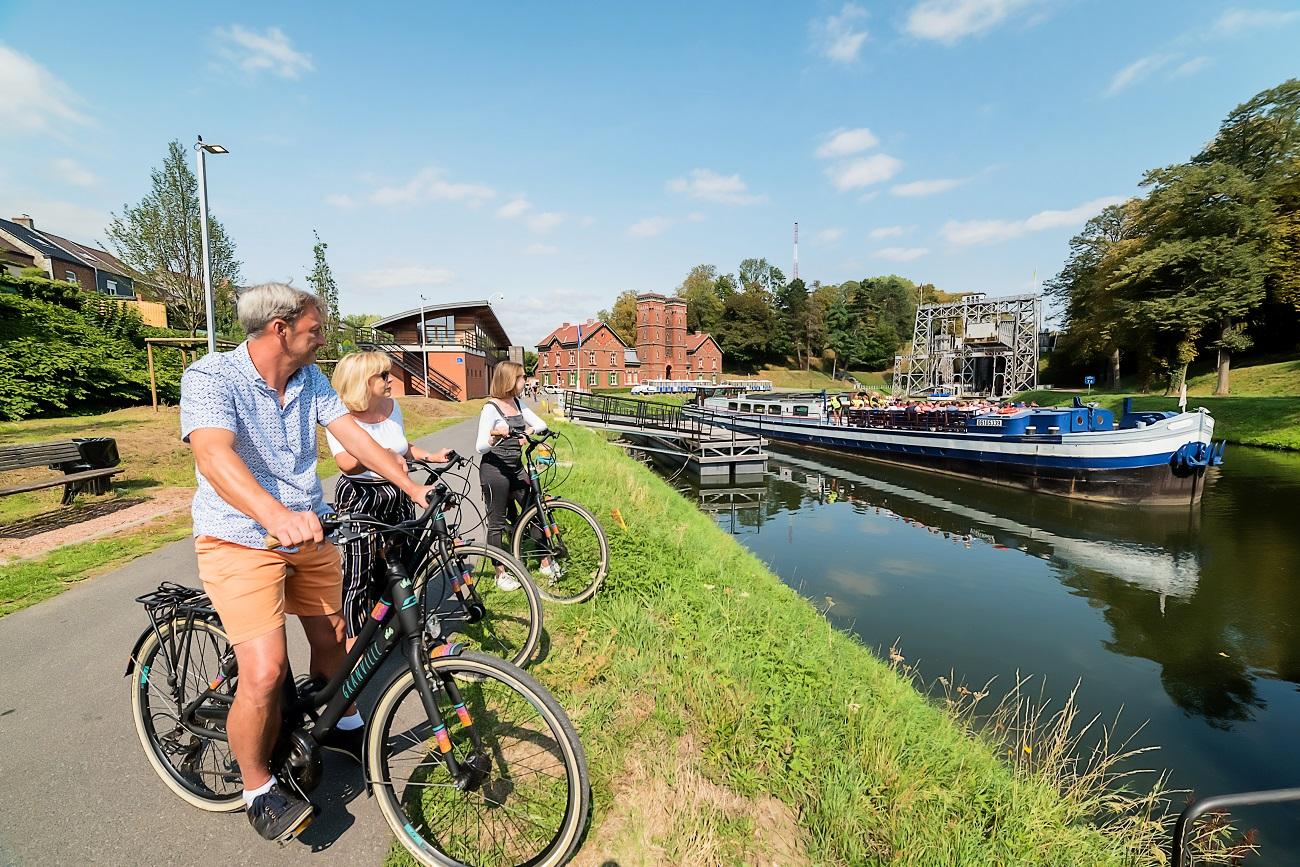
Of the twelve waterways in Hainaut, the Canal du Centre is the one with the most impressive international reputation, thanks in particular to its exceptional engineering structures !
This waterway was built in several stages during the Industrial Revolution at the end of the 19th century. The aim was to link the various coalfields in Hainaut with Flanders and Northern France, thereby meeting the major economic need of the Central region - the movement of coal. It had a considerable impact, attracting a large number of industries to the Centre region.
But the construction of the Canal du Centre was not without its difficulties. It had to overcome a 90-metre difference in level between the Centre branch at Houdeng, dug in the small Thiriau valley, and the Haine valley at Mons.
To avoid building 17 locks, plans for 4 hydraulic lifts were developed in 1884. Work began the following year and in 1888, King Leopold II inaugurated lift no. 1. It takes over a 15.4 m drop. Its structure was built in the Cockerill factories in Seraing, to the designs of English engineer Edwin Clark. The oldest building on the site is home to a fun exhibition entitled "La fabuleuse Machine de l'Ingénieur Clark" ("Engineer Clark's Fabulous Machine").
Concerning lifts no. 2 (Houdeng-Aimeries), no. 3 (Bracquegnies) and no. 4 (Thieu) were built 30 years after no. 1 went into operation. Despite a few modifications, mainly to the guides, hydraulic presses and pistons, the operating principle remains the same. They each have a height difference of 16.93 metres.
Of the eight hydraulic boat lifts built in the world at the same time, the four industrial monuments in Hainaut, over a hundred years old, are the only ones still operating with their original machinery and mechanism.
And even though, since 2002, the use of these boat lifts has been limited to pleasure boating and tourism, they are still very much a part of the Hainaut landscape and remain an exceptional testimony to the remarkable developments in hydraulic engineering in 19th century Europe. They will always stand out as the most astonishing examples of Belgium's hydraulic, industrial and architectural heritage.
All these qualities earned them World Heritage status from UNESCO in 1998.
Equipments/Services
- Cafeteria
- Toilets
Bike services
Sleeping nearby

